[wr_row width=”boxed” height=”auto” background=”none” solid_color_value=”#ffffff” row_bg_opacity=”100″ gradient_color=”0% #FFFFFF,100% #000000″ gradient_direction=”vertical” repeat=”full” img_repeat=”full” video_mp4 video_url_mp4 autoplay=”yes” position=”center center” paralax=”no” border_width_value_=”0″ border_style=”solid” child_of=”none” div_padding_top=”10″ div_padding_bottom=”10″ div_padding_right=”10″ div_padding_left=”10″ ][wr_column span=”span12″][wr_text #_EDITTED el_title=”” text_margin_top=”0″ text_margin_left=”” text_margin_bottom=”0″ text_margin_right=”” enable_dropcap=”no” appearing_animation=”0″ css_suffix=”” id_wrapper=”” disabled_el=”no” wrapper_padding_top=”0″ wrapper_padding_left=”0″ wrapper_padding_bottom=”0″ wrapper_padding_right=”0″ wrapper_bg_color=”” wrapper_bg_opacity_slider=”” wrapper_bg_opacity=”100″ wrapper_border_top=”0″ wrapper_border_left=”0″ wrapper_border_bottom=”0″ wrapper_border_right=”0″ wrapper_border_style=”solid” wrapper_border_color=”” wrapper_rounded_topleft=”0″ wrapper_rounded_topright=”0″ wrapper_rounded_bottomleft=”0″ wrapper_rounded_bottomright=”0″ responsive_hide=”no” ]“ One of the pleasantest things in the world is going on a journey,”
wrote English essayist William Hazlitt, “ but I like to go by myself.”
I don’t agree entirely, as sharing experiences with others seems an integral part of travel, but for various reasons, I spent three days alone last May on the island of Gavdos. I’d been several times before, once memorably on friend Mike’s yacht, when we circumnavigated the island, anchored two nights in Tripiti bay to explore ashore, then headed to Loutro. Another, equally memorable, was one November, when rough seas delayed the ferry home to Paleochora, resulting in long lonely nights in a tent with diminishing food supplies.
The 4.5 hr voyage to Gavdos was not without interest. A high sea at the ‘Skala’ meant the ‘Samaria’ left from the Marina, causing confusion, and similarly at Sougia, necessitating a D-Day type landing on the beach. Then more placidly to reach Karave port slightly late, nearing 2pm.
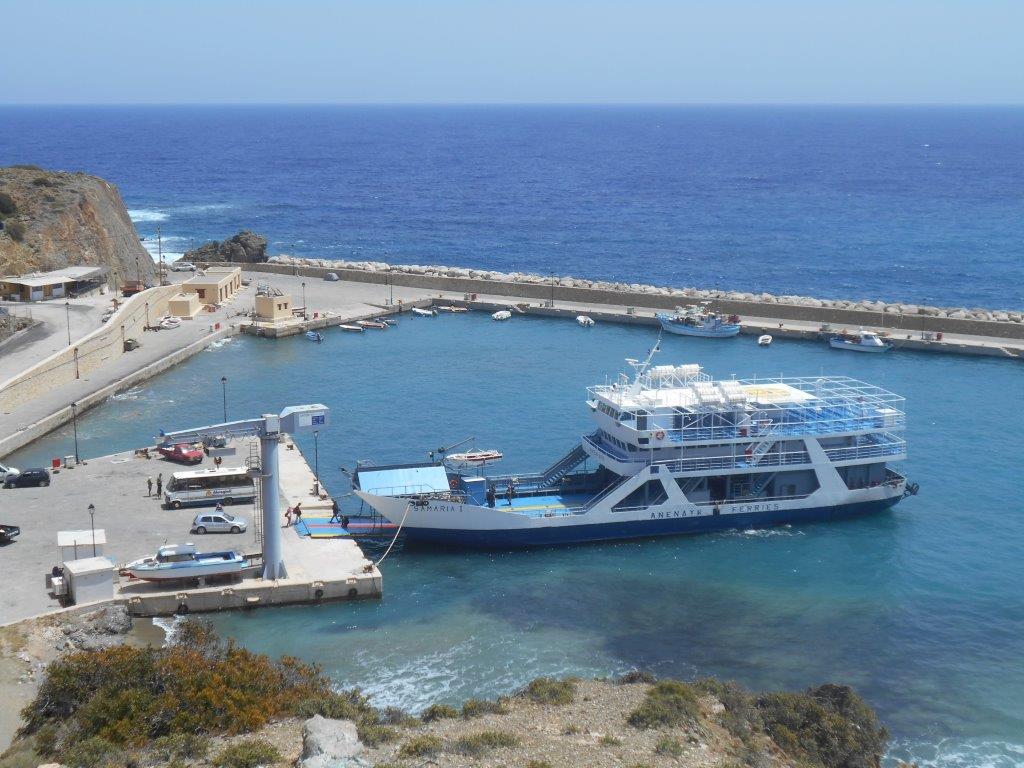
Climbing steeply away from the harbour, and taking a path to Korfos bay, the scent of the pine trees was pervasive, much of the island covered by Cretan cypress, juniper and Calabrian pines.
Gavdos has a well-marked network of trails and footpaths, perhaps the best being from Korfos to Tripiti, at the far south of the island, where I would camp for the night. But a sad sight met my arrival, the beached wreck of a boat which had brought 151 immigrants ashore in April 2015, refugees from Syria, Somalia, Egypt, Sudan, Iraq and Eritrea, including 40 unaccompanied children. Happily all survived, and 6 Egyptian trafficers were arrested.
Later, wooden debris made a fine fire on the beach as darkness fell. Next morning, a climb to the huge wooden chair high above the three-arched promontory, which marks Europe’s most southerly point, and off on a track along and high above the rugged west coast to Vatsiana.
I anticipated a stop at Vatsiana’s small ‘kafenion’, but found it closed ; Maria waved, calling “We’re not open for summer yet, but I can make you coffee, come on in.”
We chatted for half an hour, Maria, originally from Athens, telling me her two children were two/thirds of the primary school roll, and despite recent developments, their house still had no main water supply. Very much dependent on summer tourism, the remainder of the year would be difficult.
The day becoming warmer, I walked into Kastri, the island’s ‘capital’, on the chance of buying more bottled water, and a bonus – a late lunch of salad and eggs (plus water) at ‘Gogos’ taverna. Then along another marked path through the pines to Ambelos, passing close to Gavdos’ high point of 364m, and through two long-abandoned settlements of Pateridon and Fragediana. The latter, I thought, would be a nice place to camp later, and so it proved.
But first to Ambelos, and the path below to the long beach of Potamos bay, deserted now but thronged with visitors in high summer.
Eight km distant is the uninhabited islet of Gavdopoula. A long but rewarding day’s walk ended with the tent pitched inside the ruined walls of Fragediana, and sufficient calories on the Gaz stove to replenish the long day’s exertions.
Next morning, breakfast in Kastri, then a delightful easily-followed path north over to Sarakiniko, the beach totally empty except for tavernas making preparations for the coming season. And from there back to Karave, well in time to relax and enjoy cool drinks before the 45km voyage over to Agia Roumeli, and from there along the coast home.
Footnote
Gavdos measures c. 8.6km x 6km, and covers 32 sq. km. Its name originates from the Roman governor/commisioner Marcus Orbilious KLAVDOUS, and became ‘Gavdos’ during Venetian times. St Paul was blown past here in a storm in AD 64 (ref. Acts 27). During the Middle Ages some 8000 people lived here, and even in 1914 the population was 1400. Now it has dwindled to less than 50 permanent residents, although (bizarrely) the 2011 Census records 152. The Anendyk ferry runs twice-weekly from Paleochora in summer, and also from Chora Sfakia.[/wr_text][/wr_column][/wr_row]

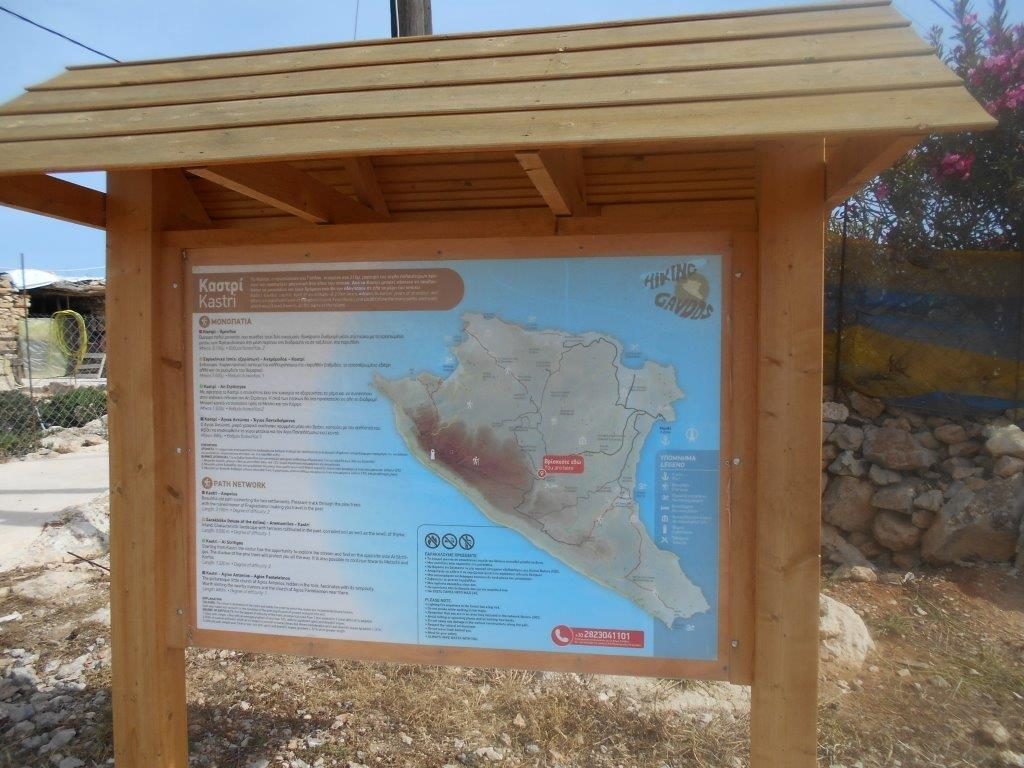
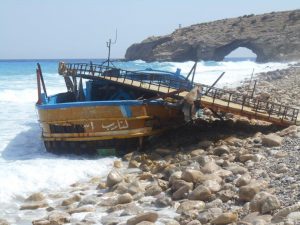
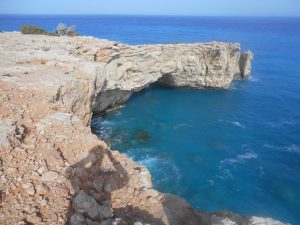

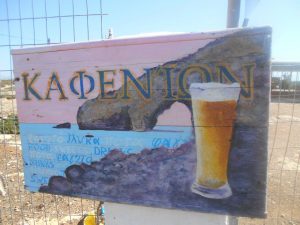
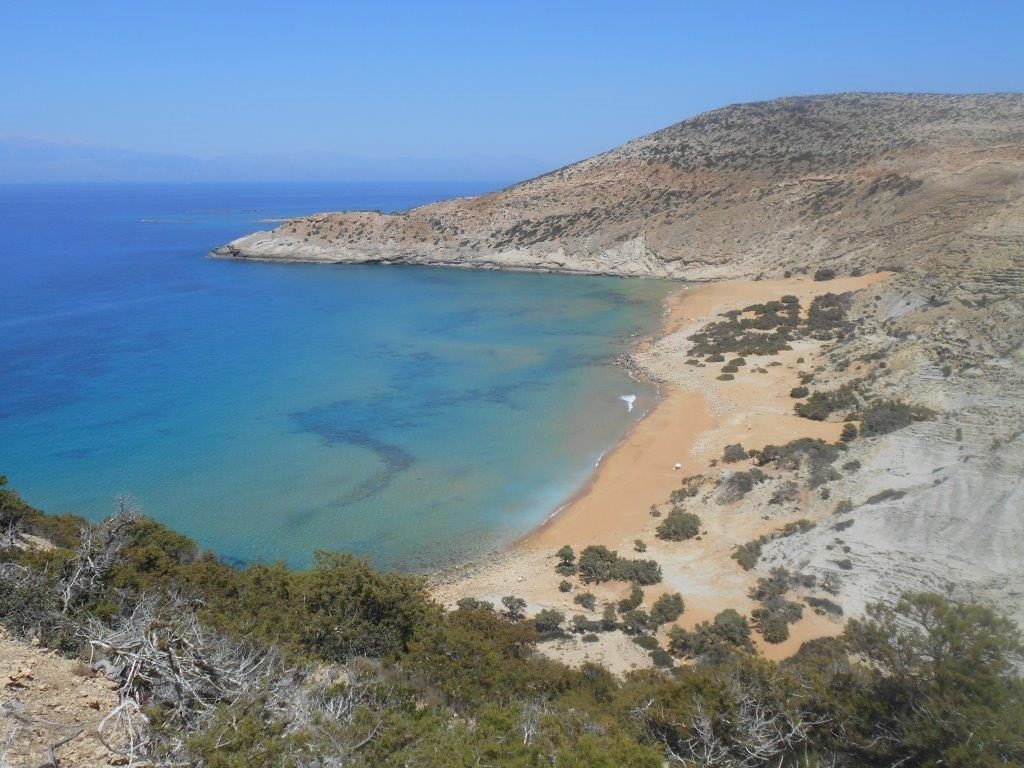
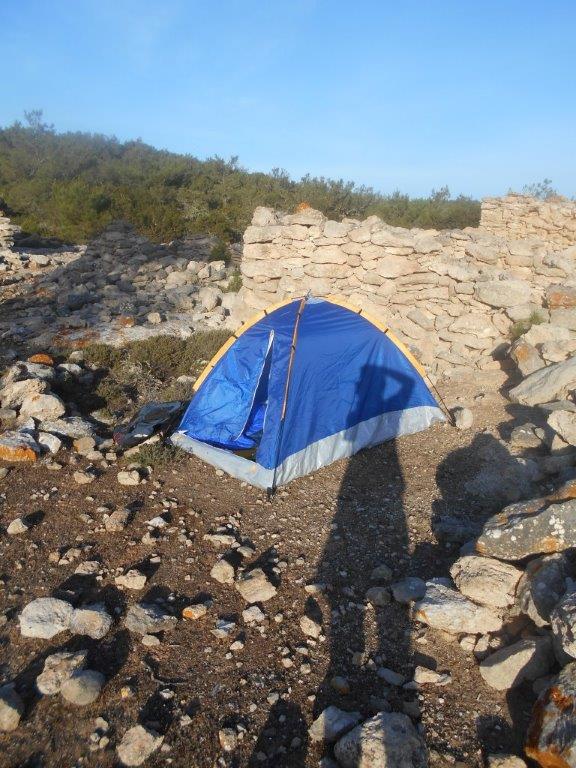

1 comments
Lovely description of an island we visited – and walked across – in 1987. I think visitors were fewer than 100 at any one time in those days. Surprised that a bus meets the ferry these days – must be a road now! We were in Crete recently, and oral accounts described the environmental mess left by tourists living rough. I prefer to live with the memory of the way it was until infrastructure is developed to cope with the numbers.